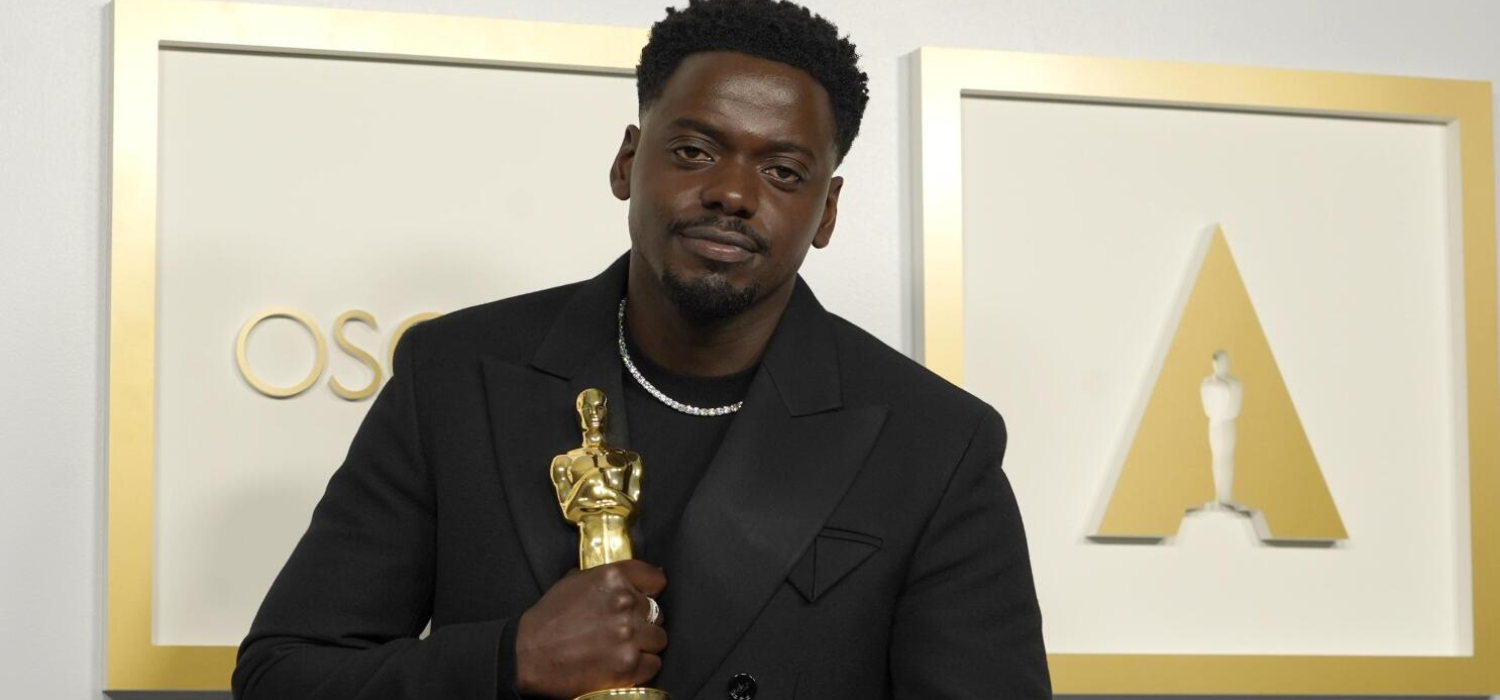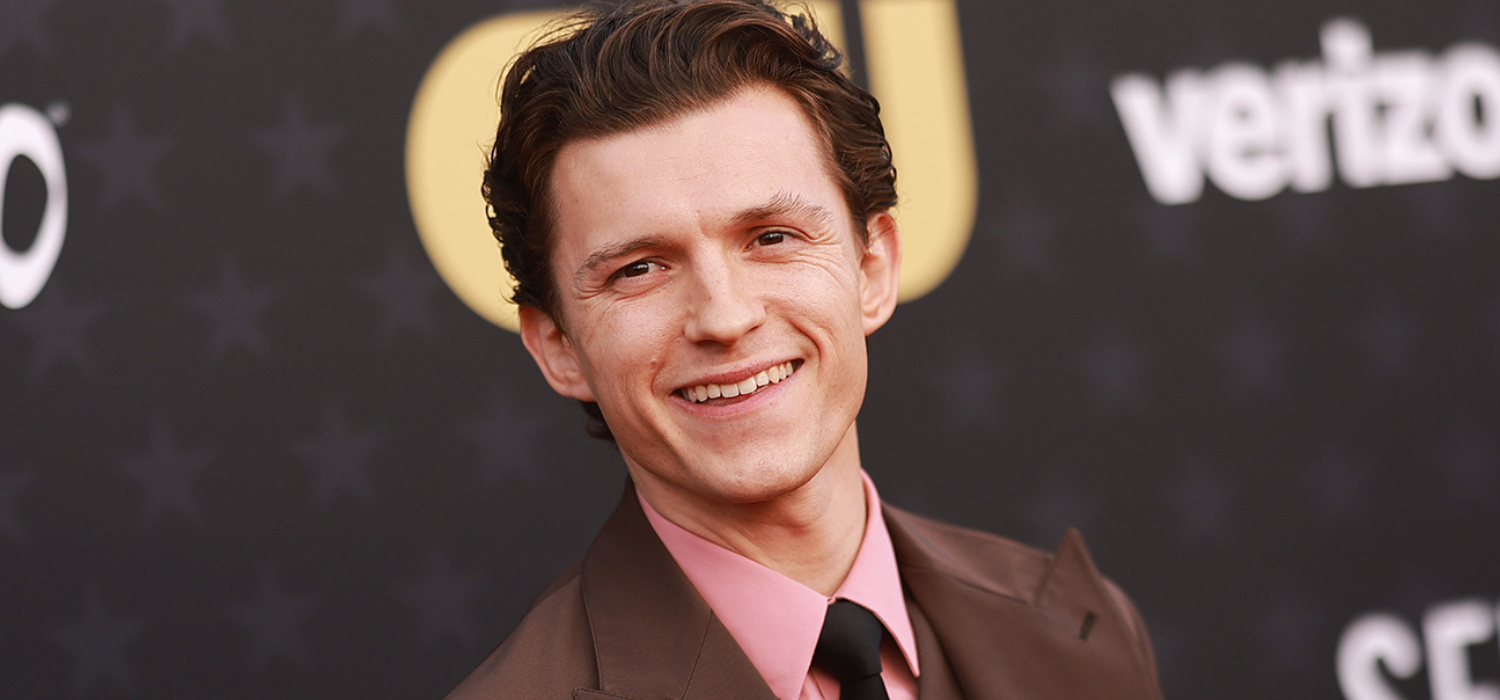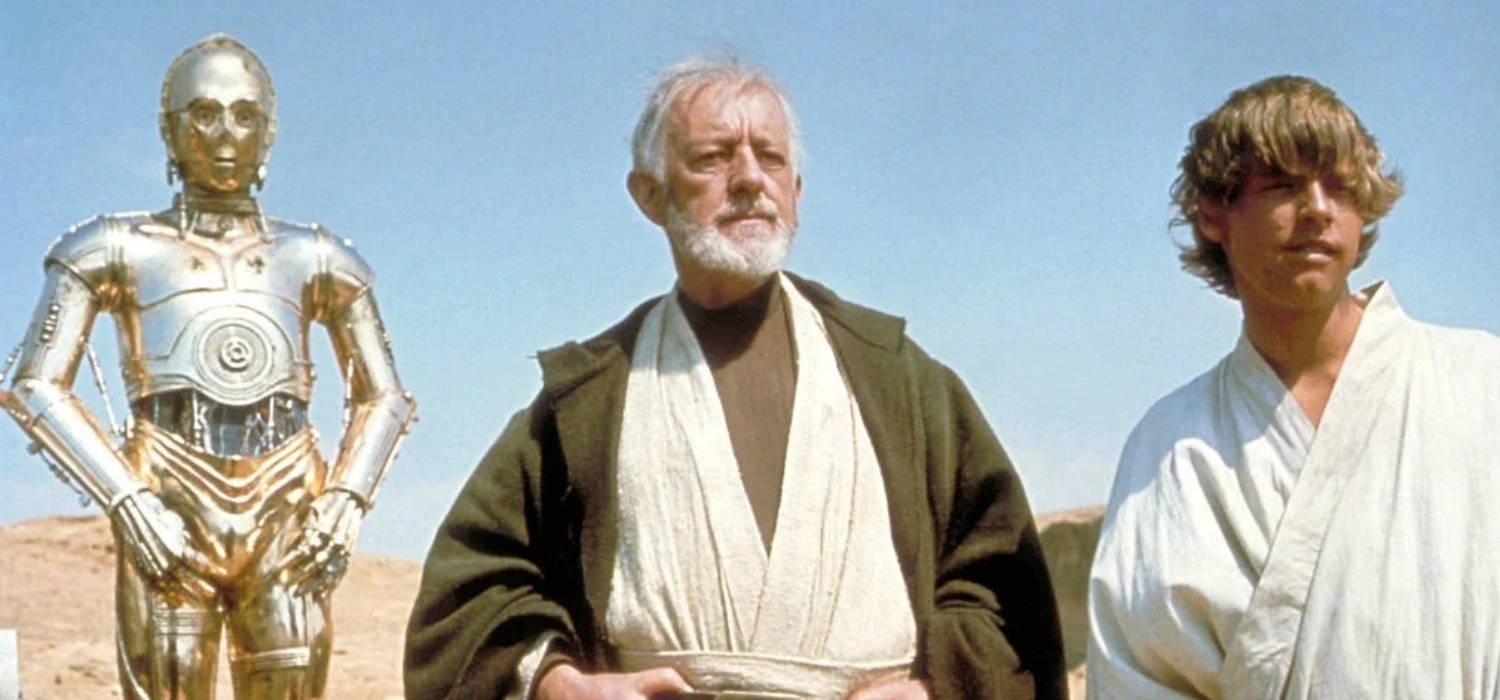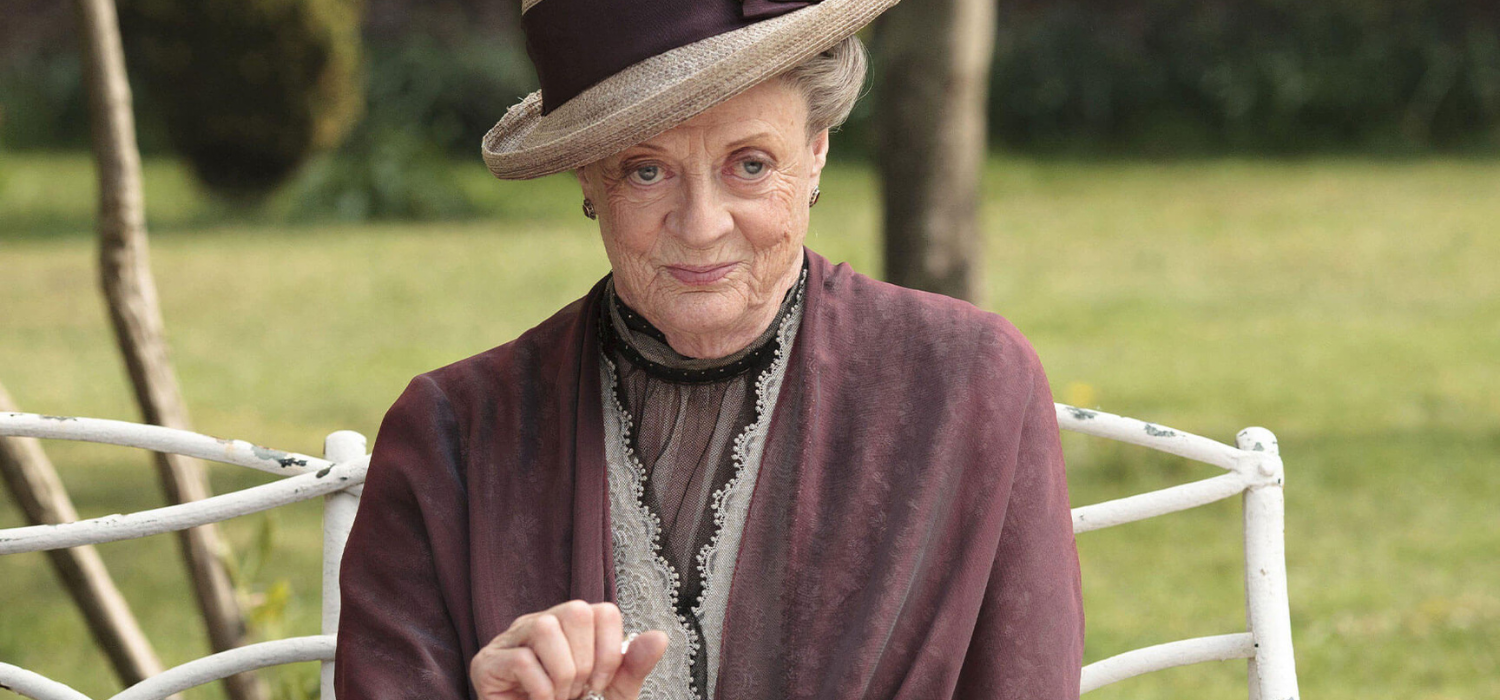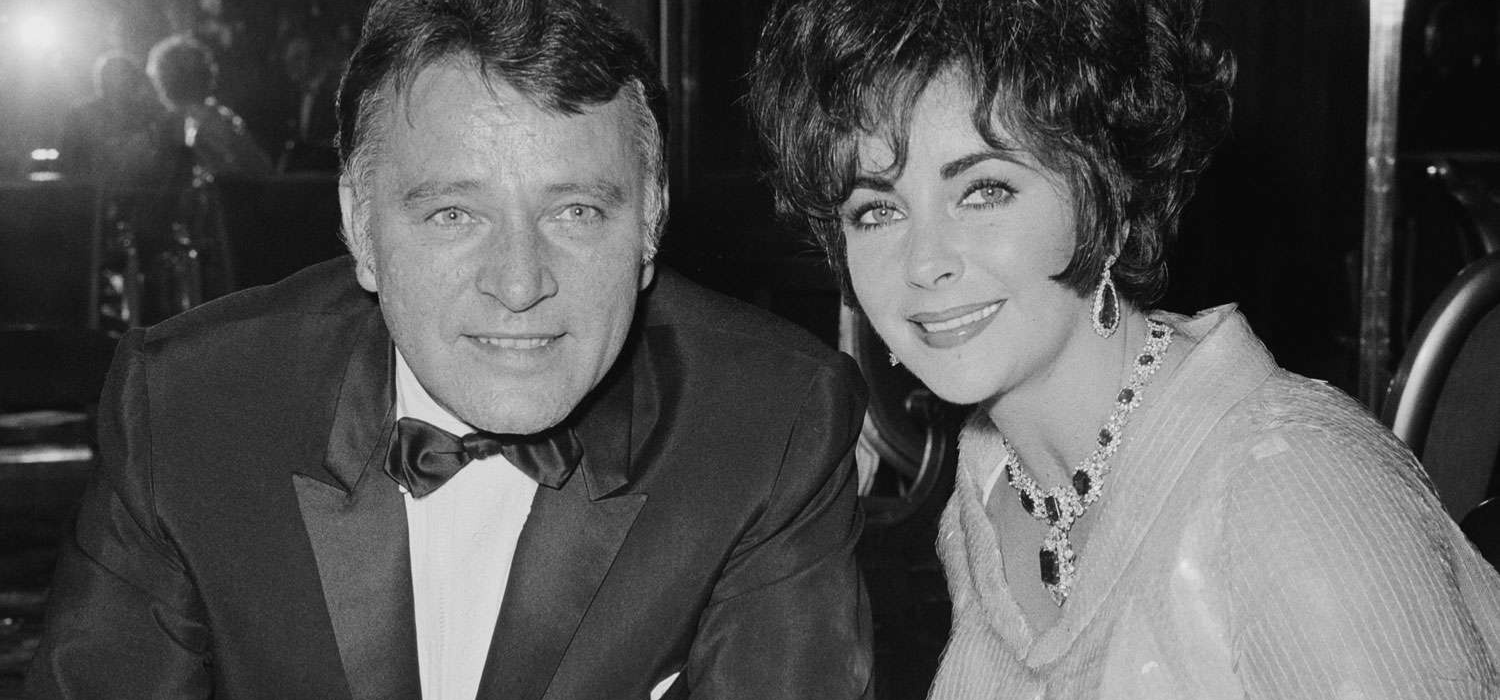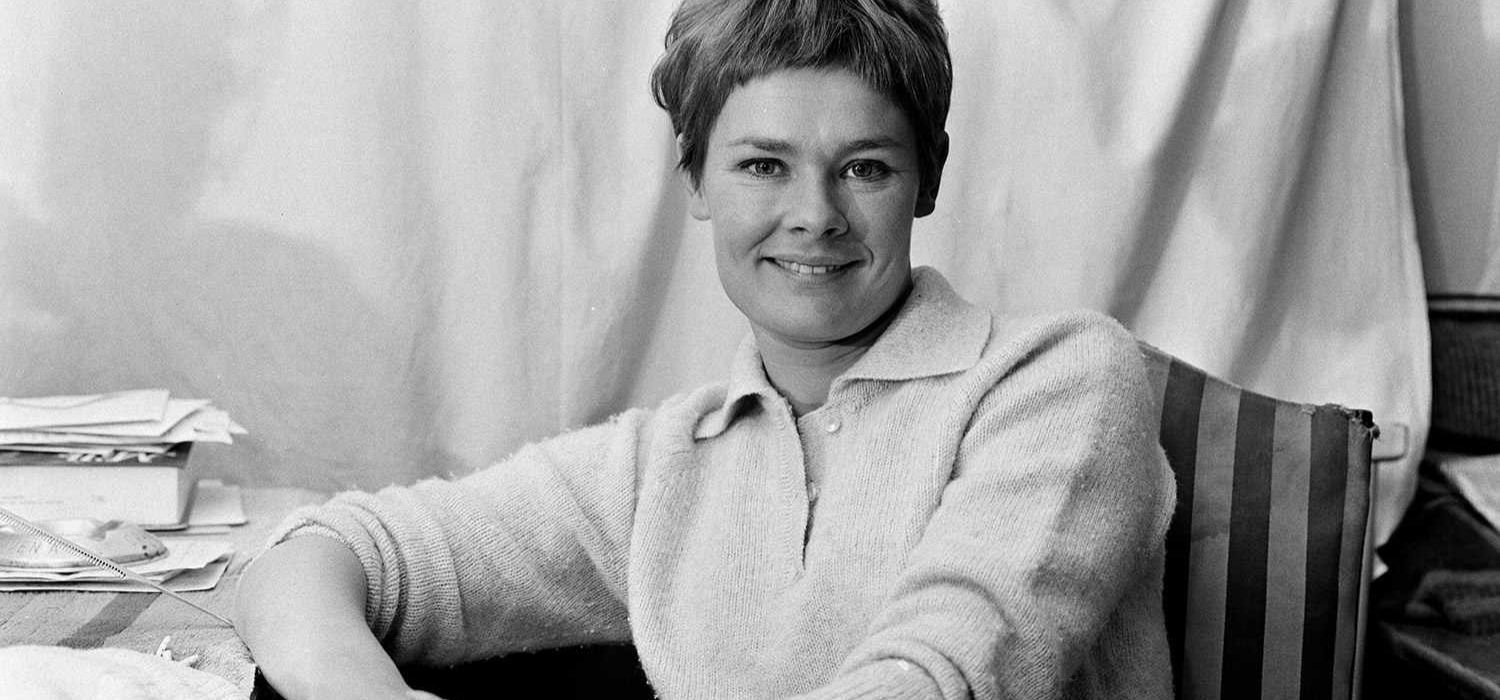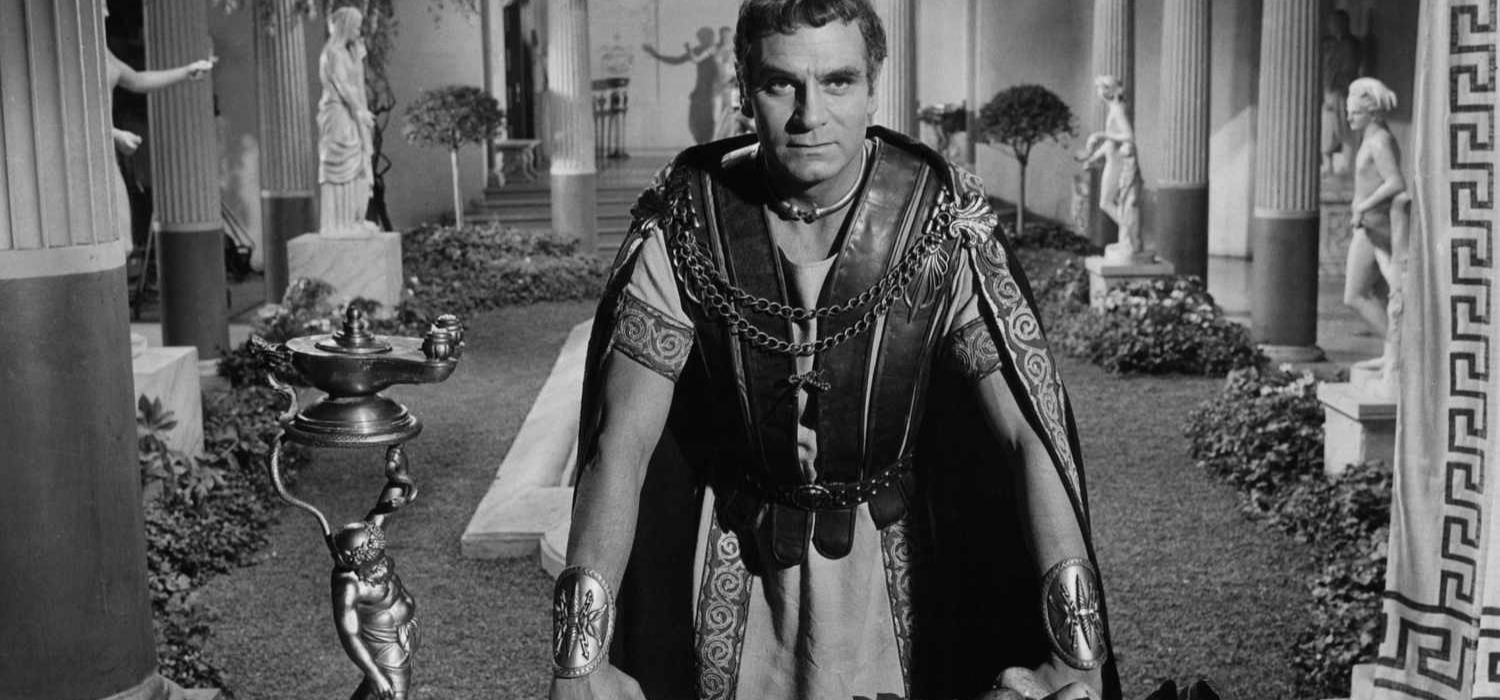Introduction: A Star on the Rise Few names in modern cinema have risen as swiftly and brilliantly as Anya Taylor-Joy. From her haunting debut in The Witch to her globally acclaimed performance in The Queen’s Gambit, she has proven herself a true force of talent. With her distinctive looks, magnetic screen presence, and an ability to embody characters that linger in the minds of audiences, Anya Taylor-Joy has become a global sensation. Her journey reflects the dynamic shifts in Hollywood, where unique voices and fresh faces redefine the landscape of storytelling. Early Life and Background Born in Miami, Florida, in 1996, to parents of diverse heritage—Scottish-Argentine and Spanish-English—Anya Taylor-Joy grew up surrounded by a multicultural identity. Her early years were spent in Argentina, where she spoke Spanish as her first language, before relocating to London in her teenage years. This blend of backgrounds gave her not only linguistic flexibility but also a strong sense of cultural diversity, which would later enhance her acting depth. Anya’s move to London proved pivotal. While adapting to a new life, she discovered her love for performing. Her passion for dance, particularly ballet, initially shaped her artistic discipline. However, as fate would have it, she eventually shifted her focus to acting—a decision that would catapult her to stardom. Discovering a Calling: The Road to Acting Like many great actors, Anya Taylor-Joy’s path to film was not straightforward. She was scouted as a model at the age of 16, but soon realized that acting was her true calling. Her striking features and ethereal presence caught the attention of casting directors, and it wasn’t long before she transitioned into screen auditions. Her first major breakthrough came with a small role in Endeavour (2014), a British detective drama, followed by an appearance in Vampire Academy (2014). Though these early roles were modest, they offered her invaluable experience on set and a glimpse into the craft she would master. The turning point, however, came in 2015, when director Robert Eggers cast her in The Witch. This atmospheric horror film became her breakout project, introducing her as a mesmerizing talent to critics and audiences alike. The Witch (2015): A Defining Debut Anya Taylor-Joy’s role as Thomasin in The Witch was nothing short of transformative. The film, set in 1630s New England, told the story of a Puritan family unraveling amidst fear and suspicion of witchcraft. Taylor-Joy’s portrayal of Thomasin—a young girl caught between oppressive family dynamics and supernatural forces—was both unsettling and deeply empathetic. Her haunting expressions, coupled with a maturity beyond her years, captivated critics. The film was praised as a modern horror masterpiece, and Anya’s performance quickly established her as a rising star. For many, The Witch remains one of the finest horror debuts of the 21st century, cementing her reputation as an actress unafraid to embrace challenging roles. Expanding Horizons: Split and Glass Following The Witch, Taylor-Joy’s career accelerated rapidly. She joined M. Night Shyamalan’s Split (2016) alongside James McAvoy, portraying Casey Cooke, a teenager abducted by a man with dissociative identity disorder. Her ability to balance vulnerability with resilience resonated with audiences, making her character a fan favorite. The success of Split not only introduced Taylor-Joy to wider commercial audiences but also led to her reprising the role in Glass (2019). This collaboration with Shyamalan highlighted her adaptability and cemented her status in both independent cinema and mainstream Hollywood productions. Indie Darling: Embracing Complex Roles Even as she achieved commercial recognition, Taylor-Joy continued to embrace independent films. She starred in projects such as Thoroughbreds (2017), a dark comedy where her performance as Lily demonstrated her knack for playing morally ambiguous characters. Her choices reflected a career driven less by fame and more by artistry. Rather than sticking to safe roles, Taylor-Joy consistently pursued characters that were layered, flawed, and intriguing. This dedication to artistic integrity has made her one of the most respected young actors in the industry. Emma (2020): A Fresh Take on a Classic In 2020, Taylor-Joy took on the role of Emma Woodhouse in the period comedy Emma, adapted from Jane Austen’s beloved novel. While many actresses had previously portrayed Emma, Taylor-Joy’s version brought a distinct blend of wit, charm, and sharpness. Her performance struck a balance between Austen’s satire and modern sensibilities, introducing the classic character to a new generation of viewers. The film received critical acclaim, and Taylor-Joy’s portrayal earned her a Golden Globe nomination. The Queen’s Gambit (2020): A Global Phenomenon If The Witch made Anya Taylor-Joy a breakout star, then The Queen’s Gambit made her a global sensation. Released on Netflix, the limited series followed Beth Harmon, a chess prodigy navigating addiction, personal loss, and the pressures of success in a male-dominated field. Taylor-Joy’s performance was universally praised. She brought Beth to life with nuance, capturing both her brilliance and her inner struggles. The series became one of Netflix’s most-watched shows, sparking renewed global interest in chess and making Taylor-Joy a household name. Her role earned her numerous awards, including a Golden Globe for Best Actress in a Limited Series, a Screen Actors Guild Award, and an Emmy nomination. Beyond accolades, The Queen’s Gambit cemented her influence in popular culture, proving her power as a global icon. Last Night in Soho (2021): A Psychological Tour de Force After the enormous success of The Queen’s Gambit, Anya Taylor-Joy continued to push her boundaries with Last Night in Soho (2021), directed by Edgar Wright. The psychological thriller blended time-traveling fantasy with horror and drama, creating a visually stunning and narratively complex experience. Taylor-Joy portrayed Sandie, a glamorous yet tragic singer in 1960s London, whose dreams of stardom unravel into a dark spiral. With her magnetic presence, she perfectly captured the allure of the era while also exposing its dangers. The role allowed her to showcase her singing talent with the performance of “Downtown,” which became a standout moment of the film. Critics praised her portrayal for its balance of charm and vulnerability. While the film divided audiences in terms of
Rising Star: Daniel Kaluuya’s Path from London to Hollywood
Introduction: The Rise of a Modern Icon British cinema has always been known for producing world-class actors whose work resonates far beyond the United Kingdom. In recent decades, few actors have captured the imagination of both critics and audiences the way Daniel Kaluuya has. With his commanding presence, emotional depth, and fearless approach to storytelling, Kaluuya has transitioned from the vibrant neighborhoods of London to the dazzling spotlight of Hollywood. His journey reflects not only his personal talent but also the evolution of British acting on the international stage. Early Life in London Roots and Upbringing Daniel Kaluuya was born in London in 1989 to Ugandan parents. Growing up in Camden, his environment was filled with cultural diversity, challenges, and opportunities for self-expression. His early life experiences gave him a deep understanding of identity, struggle, and resilience—qualities that would later shine through in his acting. Discovering Acting From a young age, Kaluuya gravitated toward writing and storytelling. By the time he was nine, he had already written his first play, which was performed at Hampstead Theatre. His creative spark and sharp eye for character development became evident, laying the foundation for his future career. First Steps in the Acting World Entry into Television Like many British actors, Daniel Kaluuya’s career began with small roles on British television. His early appearances in shows such as Shoot the Messenger and Silent Witness gave him practical exposure to professional acting environments. Breakthrough with Skins His first major recognition came from Skins, the Channel 4 series that redefined teen drama for a generation. Not only did he play the character of Posh Kenneth, but he also wrote several episodes, showcasing his multi-talented approach to storytelling. Skins allowed him to experiment with creativity while providing visibility in the UK entertainment industry. Breaking Barriers with Stage Performances Theatrical Excellence While television gave him a start, Kaluuya also pursued theater passionately. His stage work in productions like Sucker Punch at the Royal Court Theatre earned him critical acclaim. The role highlighted his physicality, intensity, and emotional intelligence, winning him awards and catching the attention of casting directors worldwide. Learning the Craft The theater experience gave Kaluuya an unmatched depth in performance. British theater has a rich legacy, and Kaluuya’s immersion in this tradition provided him with a foundation that would later distinguish him in film. Transition to Film Smaller Roles in British Cinema In the early 2010s, Daniel Kaluuya started taking on film roles, including supporting parts in Johnny English Reborn and Kick-Ass 2. Though minor, these appearances helped him gain confidence and learn the mechanics of film acting. Breakthrough with Get Out Kaluuya’s career-defining moment came with Jordan Peele’s Get Out in 2017. His portrayal of Chris Washington, a young Black man trapped in a terrifying social experiment, became iconic. The film was both a cultural phenomenon and a box-office success, with Kaluuya receiving an Academy Award nomination for Best Actor. His performance was lauded for its emotional vulnerability, subtlety, and sheer intensity. Recognition in Hollywood Awards and Nominations Following Get Out, Kaluuya quickly rose to prominence in Hollywood. His performance earned him nominations from the Oscars, Golden Globes, BAFTAs, and Screen Actors Guild Awards. This level of recognition established him as one of the most respected young actors of his generation. Expanding His Filmography Kaluuya followed up his breakout with roles in Black Panther (2018), Widows (2018), and Queen & Slim (2019). Each project showcased a different facet of his ability—ranging from blockbuster intensity to intimate drama. His choices reflected an intentional strategy to balance commercial appeal with artistic depth. Defining Role: Judas and the Black Messiah Embodying Fred Hampton Kaluuya’s portrayal of Fred Hampton, chairman of the Illinois chapter of the Black Panther Party, in Judas and the Black Messiah (2021) remains one of his most powerful performances. His ability to capture Hampton’s passion, charisma, and revolutionary spirit stunned critics and audiences alike. Oscar Win For this role, Kaluuya won the Academy Award for Best Supporting Actor, making history as one of the youngest actors to achieve this recognition. His acceptance speech, infused with gratitude and humility, highlighted his journey from Camden to Hollywood’s highest stage. Representing Black British Talent Breaking Stereotypes Kaluuya’s success also brought attention to the presence of Black British actors in Hollywood. His achievements broke barriers, showing that talent from diverse backgrounds could thrive globally. Advocating for Representation Throughout his career, Kaluuya has spoken openly about diversity, representation, and the importance of telling authentic stories. He has consistently chosen roles that challenge societal stereotypes, ensuring that his work resonates with cultural and political significance. Versatility on Screen Blockbuster Presence From Marvel’s Black Panther to ensemble casts like Widows, Kaluuya has shown his ability to thrive in large-scale productions. His presence elevates blockbuster films, proving that he can bring gravitas even to commercial projects. Indie and Dramatic Choices At the same time, Kaluuya has maintained a strong presence in independent films. Movies like Queen & Slim highlight his interest in socially conscious narratives, where emotional truth is as important as cinematic spectacle. From Actor to Producer Expanding Horizons Daniel Kaluuya has also moved into producing, taking on greater control over the types of stories he wants to tell. By stepping behind the camera, he ensures that underrepresented voices and unique perspectives have a platform. Commitment to Storytelling For Kaluuya, production is a natural extension of his acting career. His love for storytelling drives him to explore different formats and ensure that the next generation of creatives has opportunities to thrive. The Importance of London Roots Camden Influence Despite his Hollywood success, Kaluuya often reflects on his London upbringing. The experiences of growing up in Camden, surrounded by cultural diversity and urban challenges, shaped his worldview and continues to inform his performances. Staying Grounded His London roots keep him grounded, reminding him of the community and struggles that shaped his journey. He often credits his background for giving him the resilience to succeed in an industry known for its difficulties. Inspiring
Breakout Icon: Emma Mackey and the New Wave of British Acting
Introduction: A New Era for British Talent The landscape of British acting has consistently produced some of the most captivating figures in the global entertainment industry. From Shakespearean veterans to modern screen stars, Britain has long been a hub of extraordinary talent. In recent years, however, a new wave of actors has emerged—youthful, versatile, and unafraid to challenge conventions. Among them, Emma Mackey stands out as one of the most promising and influential voices. Known initially for her breakout role in Netflix’s Sex Education, Mackey has since carved out a distinct identity that extends far beyond the boundaries of television. With her sharp screen presence, natural charisma, and remarkable adaptability, she has become a beacon of the modern acting generation. This blog delves deep into Emma Mackey’s journey, her roles, her influence, and the larger movement of new British actors redefining the global stage. Early Life and Formative Years Emma Mackey was born in Le Mans, France, to a French father and an English mother, giving her a bi-cultural heritage that would later enrich her acting identity. Growing up in the Loire Valley, she developed a strong connection to both British and French culture, allowing her to bridge two artistic traditions that value storytelling in distinct but complementary ways. Her educational journey brought her to the United Kingdom, where she studied English language and literature at the University of Leeds. While there, Mackey immersed herself in theatre, experimenting with performance styles and building a foundation that would serve her later career. Unlike many actors who take a traditional drama school route, Mackey’s academic focus on literature gave her a broader perspective on character development, narrative construction, and thematic depth. The Breakout Moment: Sex Education The turning point in Emma Mackey’s career came in 2019 with the release of Netflix’s Sex Education. Cast as Maeve Wiley, Mackey embodied a character who was sharp-witted, independent, and layered with emotional complexity. Maeve was not a typical “bad girl” trope but a nuanced representation of a young woman navigating socioeconomic challenges, intelligence, and vulnerability. Mackey’s performance resonated instantly with audiences. Viewers praised her ability to convey strength and fragility simultaneously, making Maeve one of the most beloved characters in the series. Critics highlighted how Mackey brought depth to what could have easily been a one-dimensional role, and her delivery elevated Sex Education from just another teen comedy-drama into a cultural phenomenon. Beyond character appeal, Sex Education marked Mackey’s entrance into global stardom. The show’s reach across international audiences cemented her place as a rising talent to watch. Rising Fame and Industry Recognition With the success of Sex Education, Mackey’s profile soared. She was quickly recognized not just as an actress tied to a hit series, but as an artist with considerable range. Her nominations at the BAFTA Television Awards and other prestigious recognitions demonstrated how seriously the industry regarded her abilities. Critics often noted her uncanny resemblance to Margot Robbie, which initially became a point of conversation in the media. While this comparison brought her attention, Mackey emphasized individuality in her craft, steering clear of being typecast or reduced to her appearance. Instead, she leaned into projects that showcased her unique qualities and vision. Transitioning to Cinema After establishing herself on television, Emma Mackey transitioned into film roles that further cemented her versatility. She appeared in Kenneth Branagh’s Death on the Nile (2022), where she played Jacqueline de Bellefort, a role requiring a blend of passion, vulnerability, and intensity. Mackey delivered a memorable performance, standing out in an ensemble filled with high-profile stars. Her work in Eiffel (2021) and Emily (2022) also demonstrated her artistic depth. In Emily, Mackey took on the role of Emily Brontë, showcasing her ability to embody historical figures with sensitivity and strength. The performance was lauded for its authenticity and emotional power, earning her the BAFTA Rising Star Award in 2023. This recognition placed her firmly among the most promising talents of her generation. Craft and Style: What Makes Mackey Stand Out Emma Mackey’s craft is defined by a combination of intellectual engagement, emotional intelligence, and fearlessness. Unlike some actors who rely heavily on method or technique, Mackey has cultivated an intuitive approach, grounded in her literary studies and theatre experiences. 1. Intellectual Depth Her background in literature gives her a sharp analytical ability. She approaches characters with an eye for textual nuance, ensuring that her performances reflect thematic and psychological complexity. 2. Emotional Versatility Whether portraying the witty resilience of Maeve or the tortured brilliance of Emily Brontë, Mackey displays remarkable range. She captures subtle emotional transitions, making her characters believable and engaging. 3. Fearlessness in Role Choices From contemporary dramas to period pieces, Mackey has shown a willingness to experiment across genres. This adaptability positions her as a dynamic force within the British acting scene. A Voice for the New Generation Emma Mackey represents more than individual success; she embodies the ethos of a new generation of British actors who are reshaping industry expectations. This new wave emphasizes inclusivity, authenticity, and emotional resonance over traditional star archetypes. Unlike earlier generations, where actors often leaned heavily on prestige theatre training, Mackey and her contemporaries reflect a more diverse set of pathways into the industry. Her story highlights the growing permeability between television, streaming platforms, and cinema, showing how modern actors can fluidly move between mediums. Global Influence and Cultural Reach Thanks to platforms like Netflix, Emma Mackey’s work reaches a global audience instantly. Her roles resonate not only in the UK but across continents. For younger viewers, Maeve Wiley became a symbol of independence and intelligence, inspiring conversations about gender roles, socioeconomic struggles, and personal empowerment. Her influence extends into fashion and culture as well. Frequently featured in high-profile magazines and campaigns, Mackey’s style reflects her artistic sensibilities—chic, understated, and unapologetically authentic. This alignment between her screen presence and public image amplifies her impact as a cultural icon. Emma Mackey and the Future of British Acting Mackey is not an isolated case but part of a collective
Young Talent in Focus: Tom Holland’s Impact on Modern Cinema
Introduction In the modern age of cinema, few names have risen as swiftly and with as much global recognition as Tom Holland. Known primarily for his role as Spider-Man in the Marvel Cinematic Universe, Holland has grown from a child actor with extraordinary talent to a global superstar admired by critics and audiences alike. His journey is not just about fame—it is also about redefining what it means to be a young actor in today’s film industry. Tom Holland’s career encapsulates the delicate balance between blockbuster success and critical artistry. While superhero franchises have propelled him into the limelight, his performances in dramas, thrillers, and stage productions reveal a deeper versatility. This duality has allowed him to not only inspire younger generations of actors but also to influence how modern cinema embraces youth, talent, and authenticity. Early Life and Passion for Performance Tom Holland was born on June 1, 1996, in Kingston upon Thames, England. Growing up in a creative household—his father, Dominic Holland, being a comedian and author—Tom was exposed early to the world of performance and storytelling. His mother, Nicola, a photographer, also encouraged his creative instincts. Holland’s interest in performing arts began during his childhood when he took part in dance classes. His natural talent for rhythm and movement caught the attention of his teachers, who encouraged him to pursue dance more seriously. Although he initially faced bullying for his interest in ballet, his determination to continue would eventually become the foundation for his future stage and screen performances. His early training in dance and gymnastics would later prove invaluable, not only for his stage roles but also for the physically demanding performances required in action films. This combination of discipline, artistry, and resilience shaped him into an actor uniquely equipped to excel in diverse roles. Breakthrough on Stage: Billy Elliot the Musical Tom Holland’s first significant breakthrough came on the stage of London’s West End. After extensive auditions and training, he landed the role of Michael, the best friend of Billy, in Billy Elliot the Musical in 2008. His performance quickly impressed audiences and producers, leading to his eventual casting as Billy Elliot himself. Portraying Billy was no small task. The role required not only strong acting ability but also exceptional dance skills, stamina, and emotional depth. Holland’s ability to embody a working-class boy striving to become a ballet dancer highlighted his versatility and commitment at such a young age. Critics and theatre enthusiasts praised him for his maturity and authenticity, qualities rare in child actors. This stage experience was more than just a stepping stone—it was an intensive training ground. The discipline of live theatre, with its demands for precision, stamina, and emotional consistency, gave Holland a foundation that continues to influence his performances on screen. Transition to Film: Early Roles Tom Holland made his film debut in The Impossible (2012), a disaster drama directed by J.A. Bayona. The film, based on the true story of a family’s survival during the 2004 Indian Ocean tsunami, required Holland to convey raw vulnerability and emotional resilience. Playing Lucas, the eldest son, he delivered a performance that stunned critics worldwide. The role earned him numerous accolades, including recognition from the London Film Critics’ Circle and the National Board of Review. What stood out was his ability to portray both innocence and responsibility—qualities that resonated deeply with audiences. This performance solidified him as more than just a theatre-trained child actor; he was a rising star with the potential to take on challenging cinematic roles. Following The Impossible, Holland continued to explore diverse roles in films like How I Live Now (2013) and In the Heart of the Sea (2015). Each project revealed new facets of his acting range, preparing him for the massive opportunities that lay ahead. Spider-Man: The Defining Role When Tom Holland was announced as the new Spider-Man in 2015, reactions were mixed. Many wondered if such a young actor could carry the weight of an iconic superhero role previously portrayed by Tobey Maguire and Andrew Garfield. Yet Holland not only stepped into the role—he redefined it. Making his first appearance as Peter Parker in Captain America: Civil War (2016), Holland immediately won over audiences with his natural charisma, humor, and athleticism. Unlike previous versions, his Spider-Man felt authentically teenage, balancing the awkwardness of high school with the responsibility of being a superhero. His portrayal across standalone films like Spider-Man: Homecoming (2017), Spider-Man: Far From Home (2019), and the record-breaking Spider-Man: No Way Home (2021) cemented his place in Hollywood. Critics praised his ability to bring emotional depth to the role, particularly in moments where Peter Parker faced personal loss and moral dilemmas. Beyond critical reception, his Spider-Man became a cultural phenomenon. Holland bridged generational divides, appealing to both younger audiences discovering the character for the first time and long-time fans seeking a fresh perspective. His performance was central to making Spider-Man one of the most successful franchises in cinema history. Balancing Blockbusters and Dramatic Roles Despite his massive success as Spider-Man, Tom Holland has consistently sought to diversify his career. He avoided being typecast by taking on roles in projects outside the superhero genre. In The Devil All the Time (2020), he played Arvin Russell, a young man navigating violence and corruption in post-war America. The role showcased a darker, more mature side of Holland, proving his ability to handle complex psychological characters. Similarly, in Cherry (2021), directed by the Russo brothers, Holland portrayed a war veteran struggling with PTSD and addiction. The performance required vulnerability, intensity, and a willingness to embrace unflattering realities. While the film received mixed reviews, critics acknowledged Holland’s fearless commitment to the role. By alternating between commercial and artistic projects, Holland demonstrates an understanding of career longevity. He has positioned himself not only as a bankable star but also as an actor willing to take creative risks. Influence on Young Audiences Tom Holland’s appeal goes far beyond box office numbers. He has become a cultural role model for younger audiences
Rising Star: Florence Pugh and Her Journey to Global Fame
Introduction: A New Face of British Cinema The landscape of global cinema is constantly evolving, and every decade presents new stars who redefine artistry, storytelling, and audience connection. Florence Pugh stands as one of the most compelling actors of her generation, carving a path that blends authenticity, versatility, and courage. Known for her powerful screen presence, remarkable ability to embody diverse characters, and her refusal to be confined by stereotypes, Pugh has rapidly become a household name in both independent film circles and Hollywood blockbusters. Her journey to global fame reflects not only her personal determination but also the broader evolution of British talent making waves internationally. From her early life in Oxford to becoming a sought-after performer on the global stage, Florence Pugh represents the resilience, creativity, and adaptability that define modern acting. Early Life and Influences Florence Pugh was born on January 3, 1996, in Oxford, England. Raised in a supportive family that valued creativity, she was encouraged to explore the arts from a young age. Her father, a restaurateur, and her mother, a dancer, nurtured her creative spirit while allowing her the freedom to carve her own path. A significant aspect of her early life was her battle with health issues, including tracheomalacia, a condition that affected her breathing. Instead of letting this challenge hold her back, Pugh transformed it into resilience, which would later define her performances. She grew up surrounded by a family that valued artistic expression—her siblings are also engaged in creative fields—providing her with a strong foundation for pursuing a career in acting. During her formative years, she developed a deep appreciation for music and performance. She sang, played guitar, and uploaded cover songs on YouTube under the name “Flossie Rose,” showcasing her natural talent and confidence. This early exposure to public expression laid the groundwork for the fearless authenticity she would bring to her film career. The Breakthrough: The Falling (2014) Florence Pugh’s professional debut came in Carol Morley’s The Falling (2014), a British drama set in an all-girls school during the 1960s. In her role as Abbie Mortimer, Pugh displayed raw talent and emotional depth that immediately caught the attention of critics and industry insiders. Although only 18 at the time, her performance revealed maturity and a natural ability to inhabit complex characters. She was nominated for the British Independent Film Award for Best Newcomer, an early recognition that signaled the beginning of something remarkable. While The Falling may not have been a mainstream box office success, it positioned Pugh as a rising talent within the British film industry. More importantly, it highlighted her unique presence on screen—an ability to draw viewers in with understated intensity and emotional honesty. Struggles and Determination in the Early Years The years following The Falling were not immediately filled with stardom. Like many young actors, Pugh faced the challenges of auditioning, typecasting, and navigating the competitive world of film and television. Her determination during this period, however, became one of her defining traits. She consistently sought roles that challenged stereotypes of young women in film. Instead of leaning toward lighthearted teen dramas, she gravitated toward darker, more layered roles that allowed her to showcase her range. This decision reflected her ambition to become an artist rather than a celebrity. Her resilience paid off when she landed roles in projects like Lady Macbeth (2016), which would cement her reputation as a serious actor. Lady Macbeth: A Career-Defining Performance William Oldroyd’s Lady Macbeth (2016) became Florence Pugh’s breakout role, propelling her from rising newcomer to critical darling. In the film, she played Katherine Lester, a young woman trapped in a loveless marriage in 19th-century rural England. Her character undergoes a chilling transformation as she rebels against oppression, leading to acts of manipulation and violence. Pugh’s performance was nothing short of mesmerizing. She balanced vulnerability with ruthlessness, crafting a character who was both sympathetic and terrifying. Critics praised her ability to command the screen, with many describing her as one of the most promising talents of her generation. The role earned her the British Independent Film Award for Best Actress and established her as a force to be reckoned with in international cinema. Lady Macbeth was not only a breakthrough for Pugh but also a statement of her artistic priorities: to seek roles that challenge, provoke, and explore the complexities of human nature. Expanding Horizons: Independent and International Roles Following the success of Lady Macbeth, Pugh avoided being pigeonholed by carefully selecting projects across genres and formats. She appeared in The Commuter (2018), Outlaw King (2018), and Fighting with My Family (2019). Her role in Fighting with My Family particularly showcased her versatility. Playing real-life wrestler Saraya-Jade Bevis (better known as Paige), Pugh underwent physical training to embody the character. The film combined humor, heart, and resilience, allowing her to portray a working-class British woman breaking into the world of professional wrestling. This role was significant because it connected her with broader audiences, introducing her to Hollywood while maintaining her down-to-earth authenticity. It also demonstrated her commitment to immersive preparation, whether that meant learning combat techniques, perfecting an accent, or diving into the psyche of her characters. Hollywood Breakthrough: Midsommar (2019) In 2019, Florence Pugh achieved global recognition with Ari Aster’s Midsommar, a psychological horror film that became a cultural phenomenon. Playing Dani, a young woman coping with grief while becoming entangled in a sinister Swedish cult, Pugh delivered one of the most haunting and memorable performances in modern horror. The role demanded immense emotional stamina. Pugh portrayed grief, trauma, and psychological unraveling with a realism that left audiences shaken. The infamous “crying scene” in the film became emblematic of her willingness to embrace raw vulnerability on screen. Critics hailed her performance as one of the most powerful in recent horror cinema. Midsommar not only solidified her reputation as a fearless performer but also showcased her ability to carry a film as its emotional core. Little Women: Academy Award Nomination The same year, Florence Pugh took on
Sir Alec Guinness: The Quintessential British Actor
Introduction: A Name Synonymous with British Acting Excellence Few names in the history of cinema resonate with such weight, dignity, and artistry as Sir Alec Guinness. His career, which spanned stage, television, and film, remains a testament to the versatility and craftsmanship that defined British acting in the twentieth century. Known for his ability to transform into characters with an almost invisible ease, Guinness never confined himself to one archetype. Instead, he shifted seamlessly from Shakespearean tragedies to lighthearted comedies, and from wartime dramas to science fiction epics. When people recall the phrase “the quintessential British actor,” it is Guinness who often comes to mind. His profound stage presence, his unique command over dialogue, and his ability to balance restraint with intensity carved him a permanent place among acting legends. But Guinness was not just a performer; he was a storyteller who elevated every script he touched. Early Life: A Quiet Beginning Born Alec Guinness de Cuffe on April 2, 1914, in Paddington, London, his childhood was not one of luxury or comfort. Raised by his mother, with little knowledge of his father’s identity, Guinness experienced a somewhat unstable early life. His introduction to the arts came through school and eventually through theater, which offered him a world where imagination could replace uncertainty. Unlike many actors of his generation, Guinness was not immediately drawn to the limelight. Instead, he had an innate shyness that seemed incompatible with stage performance. Yet, that very modesty and restraint would later become the foundation of his acting style — a style defined by subtlety, nuance, and an aversion to unnecessary flamboyance. Stage Training: Foundations of Greatness Guinness’s formal training began at the Fay Compton Studio of Dramatic Art, which prepared him for a career that would balance theater and cinema. He was particularly drawn to Shakespeare, whose plays became a recurring theme throughout his early career. Joining the Old Vic Theatre, Guinness found himself among Britain’s finest stage actors, working alongside luminaries such as John Gielgud and Laurence Olivier. His performances in Shakespearean roles — Hamlet, Richard II, Romeo — were lauded for their depth and refinement. These formative years cemented his reputation as a stage actor who could embody complex characters with understated brilliance. The Transition to Film The 1940s brought with them a gradual shift for Guinness from stage to screen. His film debut was unassuming, but it was his partnership with director David Lean that catapulted him into cinematic greatness. Together, they would collaborate on some of the most iconic films in British cinema. Guinness’s breakthrough came in Great Expectations (1946), where he played Herbert Pocket. This performance introduced audiences to his ability to bring warmth and wit to supporting roles. From there, he quickly rose through the ranks, soon becoming a leading man in his own right. Collaboration with David Lean: A Historic Partnership The Guinness-Lean partnership produced masterpieces that remain etched in the history of cinema. Oliver Twist (1948) saw Guinness take on the role of Fagin, a performance that was both memorable and controversial for its interpretation. Though criticized for its stereotypical portrayal, it remains an example of Guinness’s fearlessness in immersing himself in morally complex roles. Their collaboration reached new heights with The Bridge on the River Kwai (1957), where Guinness’s portrayal of Colonel Nicholson earned him an Academy Award for Best Actor. His performance of a rigid yet morally conflicted officer in a prisoner-of-war camp remains one of the greatest in film history. Guinness brought to Nicholson a balance of authority, vulnerability, and obsession, turning what could have been a simple war role into a profound character study. Later collaborations with Lean included Lawrence of Arabia (1962), where Guinness embodied Prince Faisal, and Doctor Zhivago (1965), where he portrayed General Yevgraf Zhivago. Each role added another layer to Guinness’s reputation as a chameleon of the screen. The Ealing Comedies: A Lighter Side While Guinness’s dramatic roles often commanded the most attention, it was in comedy that he demonstrated his remarkable versatility. His work in the Ealing comedies of the 1950s showcased a lighter, mischievous side of the actor. In Kind Hearts and Coronets (1949), Guinness famously played eight different characters — members of the D’Ascoyne family — all of whom are dispatched one by one in a darkly comic story. The performance remains one of the most extraordinary feats in cinema history, demonstrating his ability to shift accents, personalities, and mannerisms with effortless ease. Other comedic gems included The Lavender Hill Mob (1951) and The Man in the White Suit (1951), both of which revealed his impeccable timing and ability to anchor stories with a blend of charm and irony. These films established Guinness as an actor equally at home in serious drama and in playful satire. Global Recognition: Obi-Wan Kenobi and Star Wars For younger generations, Sir Alec Guinness is often best remembered as Obi-Wan Kenobi in George Lucas’s Star Wars (1977). Though Guinness initially viewed the role with skepticism — famously describing the dialogue as “rubbish” — his portrayal of the wise Jedi mentor became iconic. What made Guinness’s Obi-Wan so memorable was his ability to imbue the role with gravitas. He treated the part with the same seriousness as Shakespeare, lending authenticity to a universe of fantasy. His presence anchored the film, giving it credibility and bridging the gap between science fiction spectacle and dramatic storytelling. Though Guinness reportedly had mixed feelings about being so strongly associated with the franchise, his performance introduced him to millions of fans around the world, ensuring his legacy extended well beyond British cinema. Awards and Accolades Over his career, Guinness was recognized with numerous honors. In addition to his Academy Award for The Bridge on the River Kwai, he received multiple BAFTA Awards and a Golden Globe. He was knighted by Queen Elizabeth II in 1959 for his contributions to the arts, a recognition that placed him firmly among the most esteemed figures in British cultural history. In 1980, he received a Lifetime Achievement Academy Award,
Classic Icon: Dame Maggie Smith and Her Unforgettable Roles
Introduction: A Legend of Stage and Screen Few actors in British history have captivated audiences with as much grace, power, and versatility as Dame Maggie Smith. With a career spanning over seven decades, she has become one of the most celebrated performers in both theatre and film. Known for her wit, commanding presence, and ability to move seamlessly between comedy and drama, Maggie Smith is truly a classic icon. From Shakespearean plays to modern blockbusters, she has proven that her talent knows no bounds. This blog explores her journey, her most unforgettable roles, and the legacy she continues to build. Early Life and the Spark of Talent Childhood in Ilford and Oxford Margaret Natalie Smith was born in Ilford, Essex, in 1934. She grew up in Oxford, where her early love for performance was nurtured. Although her family was not from an entertainment background, she showed a natural inclination for drama and humor. Discovering the Stage Her interest in acting led her to study at the Oxford Playhouse School, where her remarkable voice and sharp delivery set her apart. Even in her teens, Smith demonstrated a unique blend of comedic timing and emotional intensity that would become her signature as an actress. Rising Star: First Steps in Theatre Early Theatre Work Maggie Smith made her stage debut in 1952 at the Oxford Playhouse. By the mid-1950s, she was performing with the Oxford University Dramatic Society, catching the attention of critics and directors. Joining the National Theatre and Old Vic She soon became associated with the Old Vic Theatre Company, one of Britain’s most prestigious institutions. Her work in Shakespearean productions, particularly as Desdemona in Othello, established her as a serious talent. Her ability to blend classical training with natural charisma made her stand out in a crowded field of performers. The 1960s: Breakthrough on Screen Transition to Film Maggie Smith began transitioning to film in the late 1950s and early 1960s. Her early movie roles showcased her sharp wit, but it was in 1969 that she achieved global recognition. The Prime of Miss Jean Brodie (1969) Her portrayal of the eccentric and passionate schoolteacher in The Prime of Miss Jean Brodie earned her the Academy Award for Best Actress. Smith’s performance was both commanding and nuanced, capturing the complexities of a woman who both inspires and manipulates her students. This role catapulted her into international stardom and remains one of her most iconic performances. 1970s: A Decade of Versatility Tackling Diverse Roles The 1970s saw Maggie Smith take on a variety of roles in both drama and comedy. She earned acclaim in films like Travels with My Aunt (1972) and Murder on the Orient Express (1974). Academy Recognition Smith won her second Oscar, this time for Best Supporting Actress, in California Suite (1978). Her role as an insecure actress attending the Academy Awards showcased her mastery of both vulnerability and comedy. Few actors have been able to move so seamlessly between Shakespearean tragedy and sharp comedic satire. 1980s: Establishing Herself as a Household Name Expanding Her Range During the 1980s, Maggie Smith continued to dominate both stage and screen. She starred in A Room with a View (1985), where her portrayal of the well-meaning but socially awkward Charlotte Bartlett became one of her most beloved roles. Theatre Success Alongside her film work, Smith continued to return to the stage. Her work with the Royal National Theatre and the Royal Shakespeare Company reinforced her reputation as one of the greatest stage actresses of her generation. 1990s: A New Wave of Recognition Success in Comedy and Drama Smith entered the 1990s with roles that once again highlighted her comedic brilliance. Films like The Secret Garden (1993) and The First Wives Club (1996) showcased her ability to appeal to both children and adult audiences. The Sister Act Phenomenon Her role as Mother Superior in Sister Act (1992) and Sister Act 2: Back in the Habit (1993) introduced her to a new generation of fans. Her straight-laced yet humorous performance perfectly balanced Whoopi Goldberg’s free-spirited energy, making the films enduring classics. 2000s: The Global Icon Era Harry Potter and Professor McGonagall Perhaps no role has made Maggie Smith more beloved to contemporary audiences than Professor Minerva McGonagall in the Harry Potter series (2001–2011). As the stern but fair Transfiguration professor, Smith became a central figure in one of the most successful film franchises of all time. Her sharp delivery, dry humor, and underlying warmth made McGonagall unforgettable. For millions of fans around the world, Smith is synonymous with the role, cementing her status as a pop culture icon. Gosford Park (2001) Smith also starred in Gosford Park, Robert Altman’s acclaimed period drama. Her role as the sarcastic and aristocratic Constance, Countess of Trentham, earned her yet another Oscar nomination. 2010s: Downton Abbey and New Heights The Dowager Countess of Grantham In 2010, Smith took on the role of Violet Crawley, Dowager Countess of Grantham, in Downton Abbey. Her razor-sharp wit and impeccable comic timing quickly made her the standout character of the series. Quotes from the Dowager became instantly iconic, often delivering both humor and profound truth in the same breath. Smith won multiple awards for the role, including three Primetime Emmy Awards, further proving her ability to captivate audiences well into her later years. Expanding Audiences Through Downton Abbey, Smith reached an even broader global audience. Younger viewers who knew her primarily from Harry Potter now saw her as part of another cultural phenomenon, solidifying her reputation as one of the most versatile actresses in the world. Style of Performance: What Makes Maggie Smith Unique The Power of Her Voice Maggie Smith’s distinctive voice is one of her most powerful tools. Whether delivering Shakespearean verse or sarcastic one-liners, her voice carries authority and nuance. Mastery of Comedy and Drama Few actors can master both comedy and tragedy with equal brilliance. Smith’s ability to move seamlessly between the two makes her performances dynamic and unforgettable. Commanding Presence On stage and screen, Smith commands
Richard Burton: A Legendary Voice of British Cinema
Introduction: The Voice That Captivated the World Richard Burton’s name evokes images of raw charisma, unmatched theatrical presence, and a voice often described as one of the greatest ever to grace stage and screen. From humble beginnings in Wales to the dazzling lights of Hollywood, Burton became a symbol of British talent at its finest. His career was marked not only by breathtaking performances in both classical and modern roles but also by a personal life that fascinated the public as much as his artistry. Early Life in Wales: Roots of a Legend Richard Burton was born Richard Walter Jenkins on November 10, 1925, in Pontrhydyfen, a small mining village in South Wales. Growing up in a working-class family, he faced hardship early in life—his mother passed away when he was only two, and his father was a coal miner who struggled with alcoholism. Despite these challenges, Burton’s natural intelligence and talent began to shine through in school, particularly in oratory and literature. A turning point came when his teacher, Philip Burton (who later became his legal guardian and mentor), recognized his potential. Philip nurtured the young Richard’s love for language and performance, eventually helping him develop the commanding voice that would become his trademark. It was also under Philip’s guidance that Richard Jenkins took on the surname Burton—a name destined to be remembered in theatre and film history. Education and Early Stage Experiences Burton’s early education included a scholarship to Oxford University, where he briefly studied before his military service during World War II. After the war, he returned to pursue acting more seriously, performing in theatre productions that showcased his extraordinary vocal range and magnetic presence. His earliest stage appearances included Shakespearean roles, where his booming, mellifluous voice left audiences spellbound. Critics quickly took note of his ability to embody both the grandeur and the emotional intensity of characters such as Hamlet and Henry V. The Voice That Defined a Generation Richard Burton’s voice was more than an instrument; it was a force of nature. Deep, rich, and resonant, it carried the authority of a statesman and the intimacy of a poet. Listeners described it as “liquid gold” and “the sound of thunder wrapped in velvet.” His voice set him apart from his contemporaries and helped him command attention in roles that demanded both gravitas and vulnerability. This vocal gift made Burton a natural choice for Shakespearean theatre, but it also allowed him to transition seamlessly into film, where his delivery gave depth to characters ranging from warriors to tormented lovers. Breakthrough on the Stage and Screen By the late 1940s and early 1950s, Burton had begun to establish himself as a formidable presence in the British theatre scene. His performance as Prince Hal in Henry IV and his later turn as Hamlet were widely praised, cementing his reputation as one of the most exciting young talents of his generation. In 1952, Burton starred in the film My Cousin Rachel opposite Olivia de Havilland, earning his first Academy Award nomination. His striking looks, coupled with his powerful performance, marked his arrival in Hollywood. From that point onward, Burton’s career would span across both stage and screen, bridging the gap between classical theatre and modern cinema. Hollywood Fame and International Recognition Burton’s transition to Hollywood in the 1950s and 1960s propelled him into global stardom. He appeared in epic films such as Alexander the Great (1956), The Robe (1953), and Cleopatra (1963), where his romance with Elizabeth Taylor became as legendary as the film itself. His ability to bring Shakespearean gravitas to mainstream roles earned him respect from both critics and audiences. Unlike many actors of his time, Burton was not content with playing simple heroic leads—he gravitated toward complex, flawed characters, showcasing the breadth of his dramatic skill. His performances in films like Who’s Afraid of Virginia Woolf? (1966) revealed his mastery of emotional intensity and psychological depth, earning him critical acclaim and multiple award nominations. Iconic Performances on Stage and Screen Richard Burton’s career was shaped by an impressive list of performances that remain benchmarks in British and international acting. On stage, he became synonymous with Shakespearean theatre. His Hamlet, performed for Broadway in 1964 under the direction of John Gielgud, was hailed as one of the most memorable renditions of the role in the 20th century. Audiences and critics alike marveled at his ability to breathe both intellectual rigor and emotional vulnerability into Shakespeare’s words. In film, Burton’s adaptability was astonishing. He could be equally compelling as Mark Antony in Cleopatra (1963), as the tormented George in Who’s Afraid of Virginia Woolf? (1966), or as the passionate Arthur in Camelot (1967). These roles highlighted not only his vocal command but also his ability to embody complex human emotions—jealousy, rage, tenderness, and despair—all with riveting intensity. The Elizabeth Taylor Chapter: Love and Scandal Richard Burton’s relationship with Elizabeth Taylor is one of Hollywood’s most talked-about romances. Their chemistry on the set of Cleopatra quickly turned into a passionate love affair that captivated the media. Married and divorced twice, their relationship was as fiery off-screen as it was on. The pair became a symbol of glamour, excess, and tragedy, often splashed across tabloids. Yet, beyond the scandals, their relationship produced unforgettable on-screen collaborations. Together, they starred in 11 films, including The Taming of the Shrew (1967) and Who’s Afraid of Virginia Woolf? (1966). The latter not only earned Taylor an Academy Award but also showcased Burton at his finest, with a performance critics still cite as one of his most powerful. Their love story, filled with passion, fights, reconciliations, and eventual heartbreak, defined an era in Hollywood. While their personal life often overshadowed their professional work, it also added to Burton’s aura as a larger-than-life figure. Awards and Nominations: Recognition and Frustration Richard Burton received an astonishing seven Academy Award nominations over his career, but he never won a competitive Oscar—an omission often considered one of the great injustices in Academy history. His nominations spanned films like
Timeless Grace: Dame Judi Dench’s Journey as a Classic Icon
Introduction: A National Treasure with Global Impact Few actors have managed to embody both the heart of British theatre and the glamour of international cinema quite like Dame Judi Dench. With a career spanning over six decades, she is more than an actress—she is a cultural icon, revered for her extraordinary versatility, commanding stage presence, and remarkable ability to bring depth to every role she undertakes. From Shakespearean heroines to modern film powerhouses, Dench’s legacy is one of timeless grace and undeniable brilliance. Her journey is not merely about performing but about shaping the very essence of acting itself. Whether in the intimate halls of the Royal Shakespeare Company, on the grand stages of the West End, or across global cinema screens, Dame Judi Dench has remained a symbol of dedication, artistry, and inspiration. Early Life and Family Background Judith Olivia Dench was born on 9 December 1934 in Heworth, York, England. Her father, Reginald Arthur Dench, was a doctor who worked at York’s Theatre Royal, while her mother, Eleanora Olave, was of Irish descent and deeply supportive of her daughter’s artistic pursuits. Growing up in a family where theatre was both admired and accessible, Judi was naturally drawn to the stage from an early age. The environment of York, steeped in history and culture, provided fertile ground for Dench’s early curiosity about performance. Though shy as a child, she developed a fascination with storytelling, music, and movement, all of which would later define her craft. Discovering Theatre and Training at the Central School Dench’s formal training began at the Central School of Speech and Drama in London. At first, she considered a career in set design, but her passion for performing soon became undeniable. At the Central School, she honed her voice, movement, and interpretative skills, quickly establishing herself as a student of extraordinary promise. Teachers noted her intensity and emotional range, qualities that would make her one of the most compelling performers of her generation. In 1957, she joined the Old Vic Company, one of the most prestigious theatre troupes in England, and made her professional debut as Ophelia in Hamlet. The Early Shakespeare Years Shakespeare’s plays became the foundation of Dench’s career. In her early years, she portrayed a range of heroines, from Juliet in Romeo and Juliet to Lady Macbeth in Macbeth. Critics admired not only her technical mastery of Shakespearean language but also her ability to humanize complex characters, bringing raw emotion and authenticity to the stage. Her performances at the Royal Shakespeare Company (RSC) cemented her reputation. As Rosalind in As You Like It, Dench charmed audiences with wit and warmth, while her portrayal of Viola in Twelfth Night showcased her remarkable balance of comedy and poignancy. Establishing Herself in British Theatre By the 1960s and 1970s, Judi Dench was recognized as one of the leading actresses of her generation. Her work at the RSC and the National Theatre demonstrated an unparalleled range. She excelled in tragic roles, comedic parts, and everything in between. Theatre critics praised her not only for her powerful delivery but also for her intimate connection with the audience. She made Shakespeare accessible, relatable, and emotionally charged, ensuring that classical theatre continued to thrive in modern times. Transitioning to Television and Early Screen Roles While theatre remained Dench’s first love, she gradually expanded her repertoire into television and film. Her early television appearances included adaptations of classics and original dramas, where she demonstrated a natural ease in front of the camera. One of her most beloved early screen roles was in the BBC sitcom A Fine Romance (1981–1984), in which she starred alongside her real-life husband, Michael Williams. The series allowed audiences to witness her comedic timing, proving that Dench was equally skilled in lighthearted roles as she was in intense Shakespearean drama. Film Career in the 1960s–1980s Dench’s first film role came in 1964, when she played a supporting part in The Third Secret. Throughout the 1960s and 1970s, she appeared in various British films, though her cinematic career developed more slowly than her theatre acclaim. Her breakthrough came with films such as A Room with a View (1985), in which she portrayed Eleanor Lavish, a free-spirited novelist. This performance demonstrated her ability to shine in ensemble casts, even in smaller roles, capturing attention with her sharp wit and commanding presence. Marriage to Michael Williams In 1971, Judi Dench married fellow actor Michael Williams. Their marriage became one of the most enduring partnerships in British theatre and film. Together, they performed in productions both on stage and on television, developing a reputation as one of Britain’s most beloved acting couples. The marriage was marked by warmth, humor, and mutual support. Dench often credited Williams for grounding her life, providing stability amid the demands of her career. They had one daughter, Finty Williams, who followed in her parents’ footsteps and became an actress in her own right. Personal Loss and Resilience Tragedy struck in 2001 when Michael Williams passed away after a battle with lung cancer. Dench was devastated, yet she continued to find strength in her work and family. Her resilience during this period earned her even greater admiration from the public, who respected not only her artistry but her personal courage. Despite profound loss, Dench continued to perform at the highest level, channeling her grief into powerful and emotionally resonant roles that touched audiences around the world. The Bond Franchise: Reinventing M One of the defining moments in Dench’s career came in 1995, when she was cast as “M” in GoldenEye, the James Bond film that reintroduced the spy series to a new generation. Her portrayal of the head of MI6 was groundbreaking—not only because she was the first woman to play the role but because she redefined the character as a formidable and uncompromising leader. Dench’s M was authoritative, sharp, and morally complex. She held her own opposite Pierce Brosnan and later Daniel Craig, becoming one of the most beloved figures in the franchise. Her performance
Classic Icon: Sir Laurence Olivier – The Master of Stage and Screen
Introduction: The Legend of Sir Laurence Olivier When the conversation turns to the greatest actors of the 20th century, one name consistently dominates the stage and screen: Sir Laurence Olivier. He was more than just a performer; he was a cultural force who redefined acting for both theatre and cinema. Known for his commanding stage presence, meticulous technique, and magnetic screen charisma, Olivier is remembered as the ultimate embodiment of artistic excellence. His career, spanning six decades, remains a masterclass in the art of performance and a standard by which actors continue to be measured. Early Life and Formative Years Laurence Kerr Olivier was born on May 22, 1907, in Dorking, Surrey, into a middle-class family with strong Anglican values. His father, a clergyman, instilled discipline and tradition, while his early schooling sparked an interest in public speaking and performance. Olivier’s introduction to acting began at school plays, where his natural flair for dramatic delivery and stage command became undeniable. By the time he entered the Central School of Speech Training and Dramatic Art, he was already regarded as a promising young talent. Training at Drama School Olivier’s education in drama shaped the foundations of his acting style. Unlike many of his contemporaries, who leaned towards naturalism, Olivier embraced a mix of classic technique and emotional intensity. He honed his diction, physicality, and projection—tools that would later make him one of the most powerful Shakespearean actors of all time. His drama school years also introduced him to the works of William Shakespeare, planting the seeds for what would become his lifelong passion. Breaking into the Theatre Scene After completing his training, Olivier quickly found his way into repertory theatre. His earliest performances were in provincial companies, where he learned the discipline of performing night after night. This period was not glamorous, but it provided Olivier with an invaluable education in versatility, as he performed a wide range of roles—from romantic leads to villains and comic parts. These formative years built his resilience and sharpened his instincts, traits that would define his later career. Shakespeare: The Eternal Companion Perhaps no actor in modern history has been more closely associated with Shakespeare than Laurence Olivier. His mastery of the Bard’s works was both technical and spiritual. Olivier had an uncanny ability to make Shakespeare’s complex language accessible to audiences. His portrayals of Hamlet, Othello, Henry V, and Richard III remain iconic not only on stage but also on film. Olivier’s Shakespeare was not a museum piece—it was alive, urgent, and deeply human. The Leap to Cinema In the 1930s, Olivier began transitioning from stage to film. At first, he was skeptical about cinema, regarding it as inferior to theatre. However, once he embraced the medium, he revolutionized it. Unlike stage actors who struggled to adapt to the subtlety of the camera, Olivier mastered the art of modulation. He realized that screen acting demanded a restrained intensity rather than grand gestures. His early films, such as Wuthering Heights (1939), proved his ability to connect with audiences beyond the theatre. Hollywood Recognition Olivier’s breakout in Hollywood came with his role as Heathcliff in Wuthering Heights. His brooding, magnetic performance made him an international star. The intensity he brought to the character helped popularize the tragic hero archetype in American cinema. Following this, films like Rebecca (1940) and Pride and Prejudice (1940) further solidified his reputation as a leading man. Unlike many British actors of his generation, Olivier successfully crossed the Atlantic, becoming equally admired in both the UK and the US. Directorial Brilliance Olivier was not only an actor; he was also an innovative director. His film adaptations of Shakespeare—Henry V (1944), Hamlet (1948), and Richard III (1955)—were groundbreaking. They brought Shakespeare to the big screen in a way that appealed to both academics and general audiences. Henry V, released during World War II, was particularly powerful. It served as a patriotic morale booster, with Olivier’s rousing performance inspiring audiences during Britain’s darkest hour. His Hamlet went on to win the Academy Award for Best Picture, the first time a Shakespeare adaptation achieved such recognition. The Olivier Technique: Style and Substance Olivier’s acting style was marked by precision and physicality. He believed in transforming himself completely for each role—changing his voice, posture, and even facial expressions. His willingness to use makeup and prosthetics to enhance his transformations was ahead of his time. For instance, in Richard III, he donned a hunchback, a limp, and a sharp nasal tone to fully embody the role. He famously said that once he discovered a character’s physical “hook,” the performance would fall into place. A Rivalry with Gielgud and Richardson Olivier’s career cannot be discussed without mentioning his contemporaries Sir John Gielgud and Sir Ralph Richardson. Together, they formed a golden trio of British acting. Each brought something unique to the craft—Gielgud with his elegance and voice, Richardson with his wit and intelligence, and Olivier with his raw power and transformation. Their friendly rivalry pushed each of them to greater heights and created a golden age of British theatre. Personal Life and Scandals Behind the stage lights, Olivier’s life was filled with drama of its own. His marriage to actress Vivien Leigh, best known for Gone with the Wind, was one of the most talked-about unions of its time. The couple was celebrated as a glamorous pair of international stars, but their relationship was marred by Leigh’s struggles with mental health. Olivier’s later marriages, including to actress Joan Plowright, painted a more stable picture, though his private life was always under the scrutiny of the public eye. War Years and National Service World War II profoundly impacted Olivier’s life and career. Although he initially sought active duty, his value as a performer was considered greater for morale. He contributed by making patriotic films and performing for troops. His Henry V was particularly significant during this time, as it was both a celebration of Shakespeare and a rallying cry for Britain’s resilience. Awards and Accolades Olivier’s contributions to


